Ensure Ongoing DORA Compliance Across Your Third-Party Risk Management Program
5 minute read
January 2025
The Digital Operational Resilience Act (DORA) is a regulatory framework established by the European Union to ensure the operational resilience of financial entities and their service providers in the face of growing ICT-related risks. While its implementation was first introduced to the market back in 2020, the time is finally here for Information and Communication Technology (ICT) partners required to comply with these new regulations.
DORA requirements include solid and verifiable ICT risk management, incident reporting, resilience testing, and oversight of critical third-party providers, which is expected to impact how many teams conduct digital risk management.
By setting a standard for financial institutions and ICT providers, DORA is a catalyst for organizations to take third-party risk management more seriously. While compliance is a regulatory requirement, DORA’s emphasis on operational resilience helps organizations develop more mature and robust risk management programs. This renewed TPRM focus fosters greater business continuity, enhances stakeholder confidence, and positions companies as leaders in resilience and reliability to businesses, consumers, and partners.
We compiled a quick outline to ensure your program readiness for DORA’s requirements to help facilitate the work your team needs to do to comply with new regulations.
For further help ensuring your program is compliant with new DORA regulations, contact the ProcessUnity team today. We deliver a best practice approach and automated workflow to accelerate your path to compliance.
Key Areas of DORA
DORA introduces specific requirements that directly impact TPRM programs, including:
- ICT Risk Management: Ensuring that third-party providers in the ICT space comply with DORA-specific risk management practices.
- Incident Reporting: Identifying, reporting, and responding to ICT-related incidents in a responsible time frame.
- Resilience Testing: Conducting regular assessments of the resilience of ICT providers and their controls.
- Oversight of Critical Third-Party Providers: Maintaining control and monitoring of vendors whose services are essential to operations.
Unsure of Who Qualifies as an ICT Organization?
ICT (Information and Communication Technology) organizations are entities that provide technology-based services or solutions. These include cloud service providers, data centers, cybersecurity firms, and software vendors. Examples of ICT providers might include Amazon Web Services (AWS), Microsoft Azure, or third-party developers of banking software. DORA’s focus on ICT organizations underscores the need for robust third-party oversight in this space.
Financial entities must trust their vendors to uphold operational resilience, mitigate risks, and comply with regulatory standards. Organizations may face operational disruptions, regulatory penalties, and reputational damage under DORA without strong vendor risk practices.
So, what can you do to ensure DORA readiness for your Third-Party Risk Management program?
Identify Gaps in Your Current Program
Before adapting your TPRM program to DORA’s standards, it is critical to evaluate your program’s current state to uncover vulnerabilities. Conducting a gap analysis involves reviewing your existing processes, tools, and policies against DORA requirements. This could include examining your ICT risk management practices, incident reporting processes, and vendor oversight and visibility to determine where there are current gaps that designate you as non-compliant.
Once gaps are identified, it is essential to prioritize areas that pose the highest risk to your organization. This could mean addressing inadequate monitoring of critical vendors or developing clearer incident reporting workflows.
It’s crucial for your business to have a vendor tiering system in place to help group together business-critical vendors that have access to financial and consumer data that falls under the DORA guidelines. By focusing on high-impact areas first, your organization can efficiently make progress toward DORA compliance while laying a strong foundation for addressing additional gaps over time.
For a deeper dive into how ProcessUnity’s DORA Compliance Framework can work for your business, download our complete guide here.
Enhancing Your ICT Risk Management Framework
A robust ICT risk management framework is central to DORA compliance. For organizations without a current framework, the first step is to define clear policies and procedures for identifying, assessing, and mitigating risks associated with ICT systems and third-party providers. This includes establishing oversight and assessment structure and assigning responsibilities to relevant stakeholders.
For those with existing frameworks, integrating DORA requirements is the focus. This might involve updating risk assessment criteria to reflect DORA’s focus on operational resilience and enhancing continuous monitoring practices to ensure ongoing compliance. Leveraging technology solutions, such as a TPRM platform, can simplify this process by providing tools for real-time risk monitoring, vulnerability detection, automated assessments, and streamlined reporting.
Strengthening Incident Reporting and Response
Incident reporting is a critical component of DORA, emphasizing the need for organizations to respond quickly and transparently to ICT-related vulnerabilities, while maintaining a way to represent their response and threat management processes.
To achieve this, organizations must establish clear protocols for identifying and escalating incidents. This includes defining what constitutes a reportable incident and having an internal communication plan in place, all while ensuring compliance with regulatory timelines.
Developing a comprehensive incident response plan should detail how incidents are managed from detection to resolution, including communication strategies with stakeholders, customers, and authorities. Regular training and simulation exercises can help teams stay prepared and ensure that response efforts align with the DORA requirements.
Establishing a Resilient Program
Resilience testing is essential under the new DORA requirements to ensure that ICT-related systems and processes can withstand operational disruptions. This involves conducting various types of tests internally and with third parties, such as scenario-based simulations, to assess responses to real-world threats and uncover vulnerabilities in your systems.
Regularly scheduled resilience tests enable organizations to identify weaknesses before they lead to disruptions. Moreover, it’s crucial to update resilience measures based on test findings and evolving threat landscapes.
Management Plans for Critical Third-Party Providers
Critical third-party providers play a significant role in an organization’s operational resilience, and now DORA places heightened emphasis on their oversight. The first step is to identify these vendors by evaluating your vendor portfolio based on importance to your operations, and the level of access they have to sensitive data.
Once business-critical providers are identified, organizations must establish robust monitoring and oversight plans. This includes conducting regular audits, continuously monitoring vendor performance, and ensuring compliance with DORA’s requirements. Collaboration is key; it’s important to work with your vendors to provide clear expectations, share what’s working with other third parties, and address any compliance gaps together.
In Conclusion: What to Remember Moving Forward
To stay ahead of evolving DORA requirements, organizations must prioritize:
- Staying Up to Date with Adjustments: Stay aware and on top of any changes to DORA, and update your TPRM program accordingly.
- Training and Awareness: Foster a culture of resilience by educating internal teams on DORA’s impact and best practices.
- Stakeholder Engagement: Collaborate with legal, compliance, IT, and business teams to build a unified approach to vendor risk management.
Don’t Do It Alone: Leverage Technology Solutions as Partners
Regulatory compliance can be daunting without the right tools. Technology such as ProcessUnity’s Third-Party Risk Management platform can streamline your path to DORA compliance by:
- Providing DORA-compliant assessment workflows.
- Delivering a pre-made DORA data model for quick and accurate implementation.
- Enabling continuous monitoring and streamlined risk remediation.
With ProcessUnity, your team can efficiently navigate the complexities of DORA compliance, ensuring your TPRM program is resilient, robust, and ready for the future.
To see how ProcessUnity can integrate easily into your program to improve DORA compliance in 2025, request a demo today.
Related Articles

Cut Risk, Not Corners: Streamlining the...
The modern organization relies on a larger, more integrated network of third parties and suppliers..
Learn More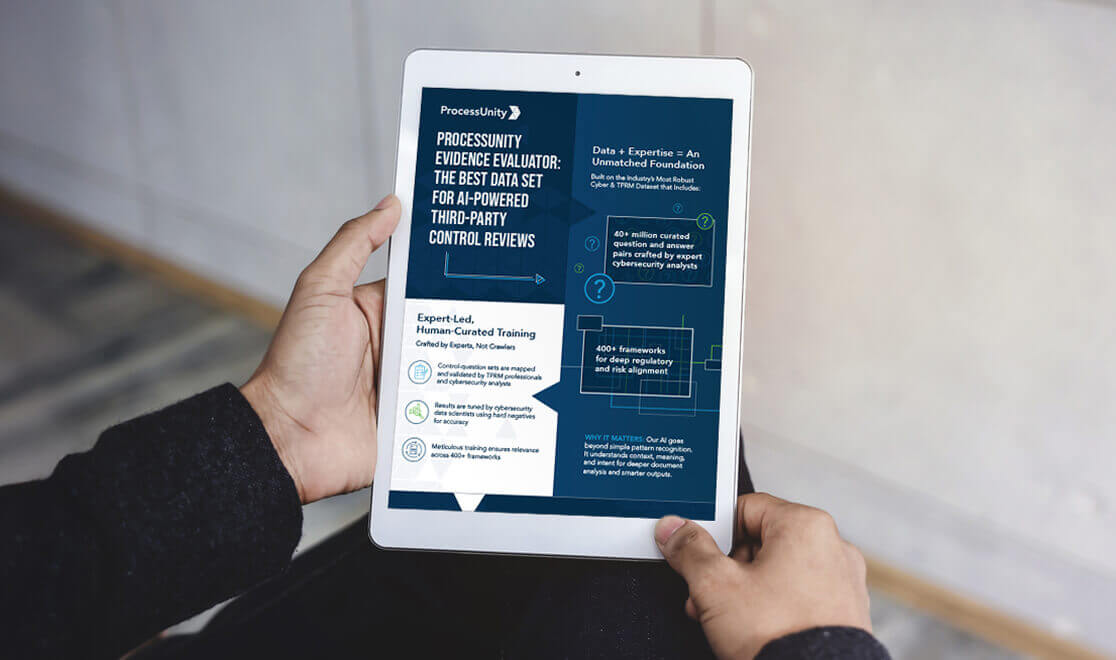
Accelerate Control Reviews with ProcessUnity’s Evidence...
Third-party risk assessments are becoming increasingly complex and resource-intensive. Manual evidence reviews create bottlenecks, inconsistent..
Learn More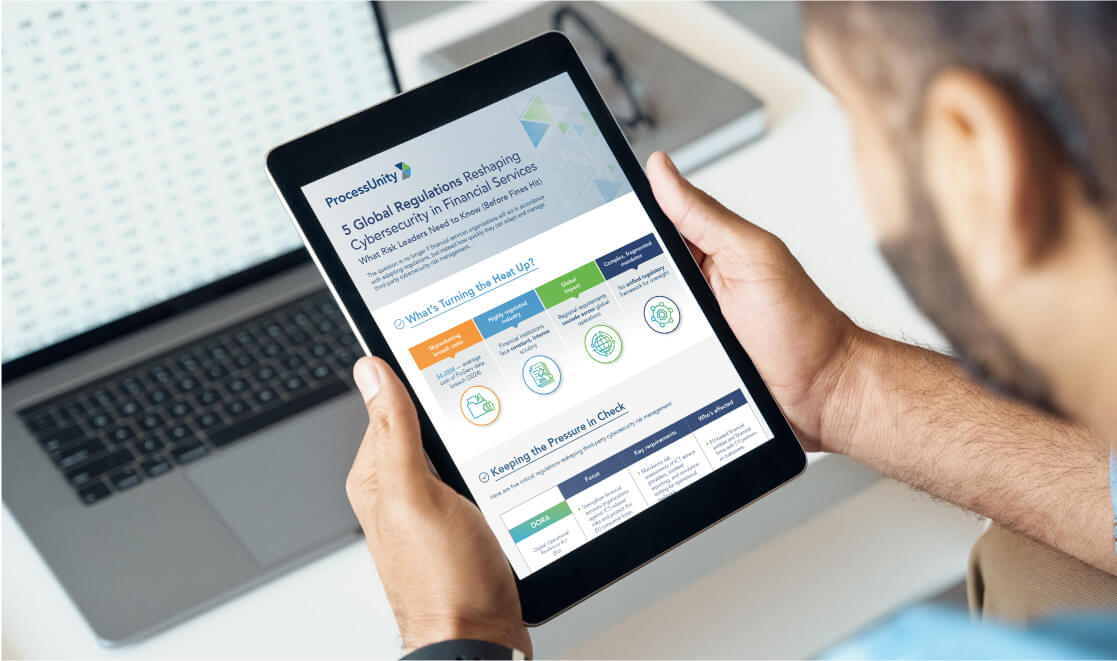
5 Cybersecurity Frameworks Financial Institutions Can’t...
Regulatory pressure is intensifying — and financial institutions are feeling the heat. In 2024, the..
Learn More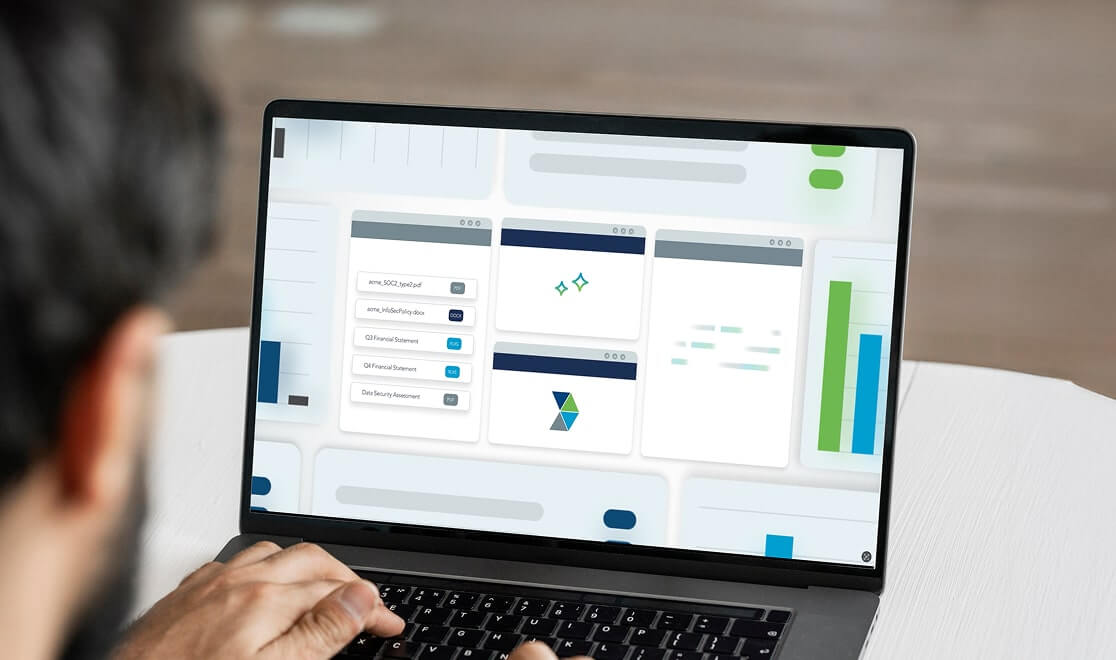
ProcessUnity Evidence Evaluator: AI-Based Third-Party Controls...
See how ProcessUnity’s GenAI-powered feature simplifies third-party risk assessments. In just 60 seconds, discover how..
Learn More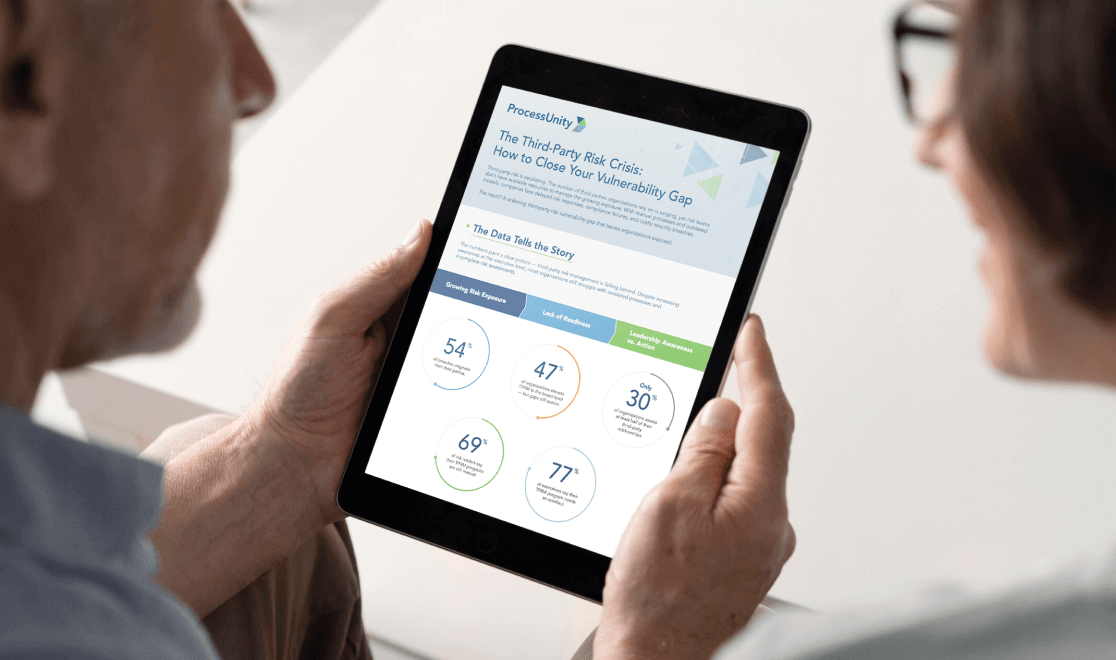
How to Close Your Third-Party Risk...
Is your organization exposed to hidden third-party risks that could create dangerous blind spots in..
Learn More
8 Ways Your Business Benefits from...
Cyber threats are intensifying. Regulatory scrutiny is increasing. Legacy assessments simply can’t keep pace. To..
Learn More
5 Critical Regulations Reshaping TPRM in...
The pressure on financial institutions to manage third-party risk is mounting — and the stakes..
Learn More
How Third-Party Vendor Risk Disrupts Business...
Your third-party vendors are delivering on time, business operations are efficient and planned, and customers..
Learn More
10 Critical Third-Party Risk Management Challenges...
Every vendor relationship can introduce potential vulnerabilities to your business, and in today's hyperconnected business..
Learn More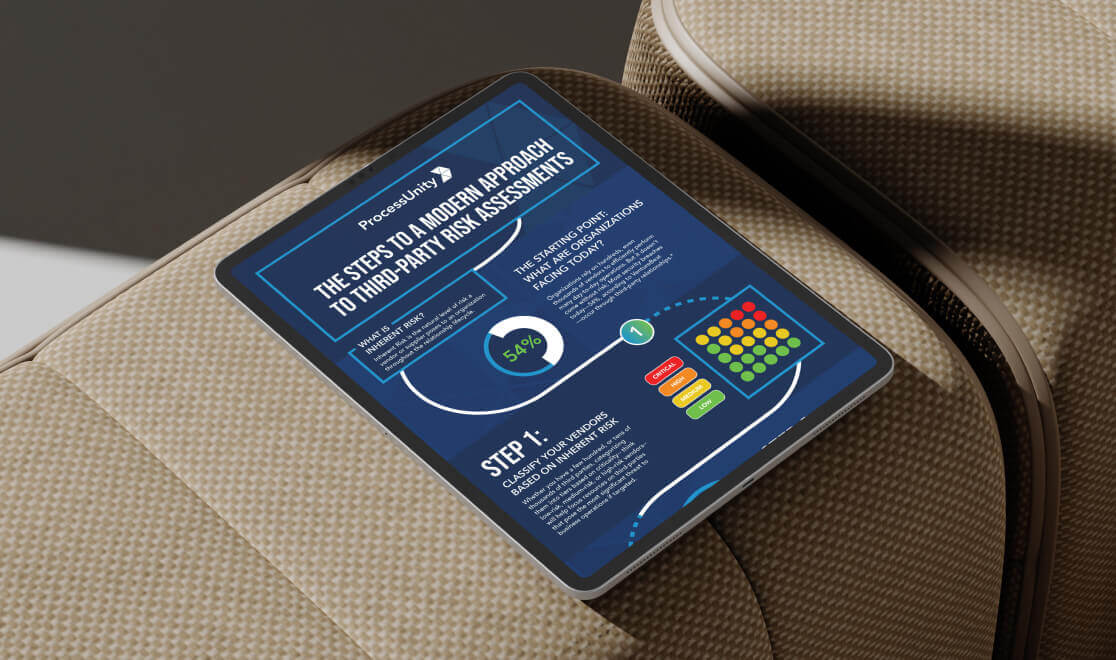
5 Essential Steps to Modernize Your...
Third-party relationships have become a critical vulnerability point - with 54% of security breaches occurring..
Learn More
Third-party risk: Re-thinking vendor assessments
Third parties can introduce substantial risk into global supply networks, but rigorous vendor risk assessments..
Learn More
ProcessUnity Introduces a Revolutionary Platform to...
Threat and Vulnerability Response Platform Utilizes Proprietary Threat Intelligence to Rapidly Identify Third-party Gaps and..
Learn More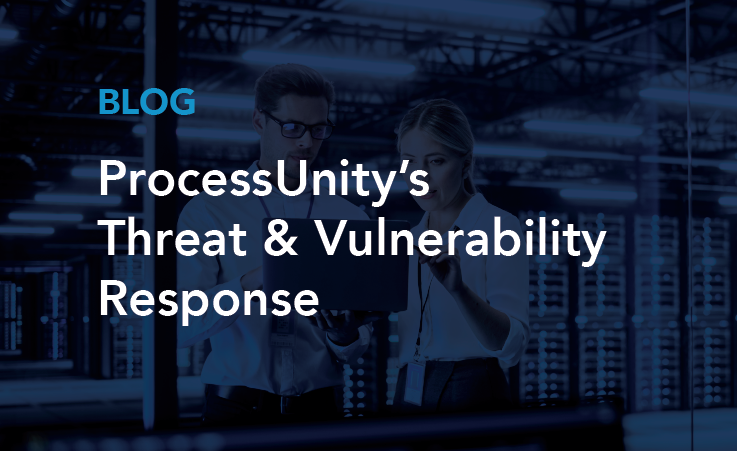
Revolutionizing Response to Emerging Third-Party Cybersecurity...
Introducing ProcessUnity’s New Threat and Vulnerability Response Platform to Quickly Identify Emerging Threats and Assess..
Learn More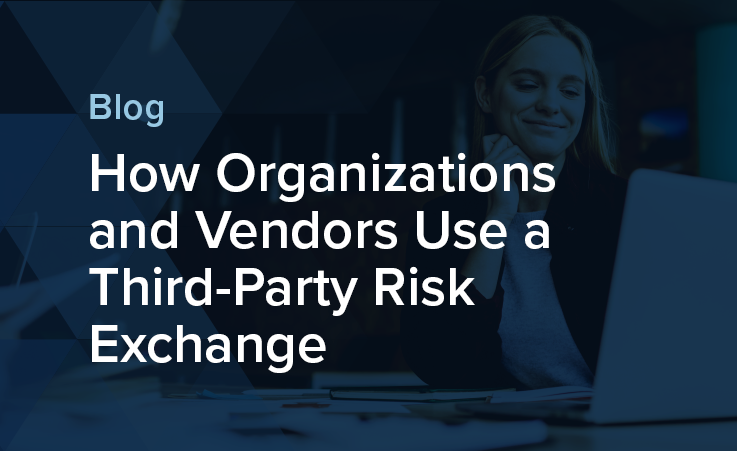
How Organizations and Vendors Use a...
A third-party risk exchange is a transformative concept designed to make third-party risk management (TPRM)..
Learn More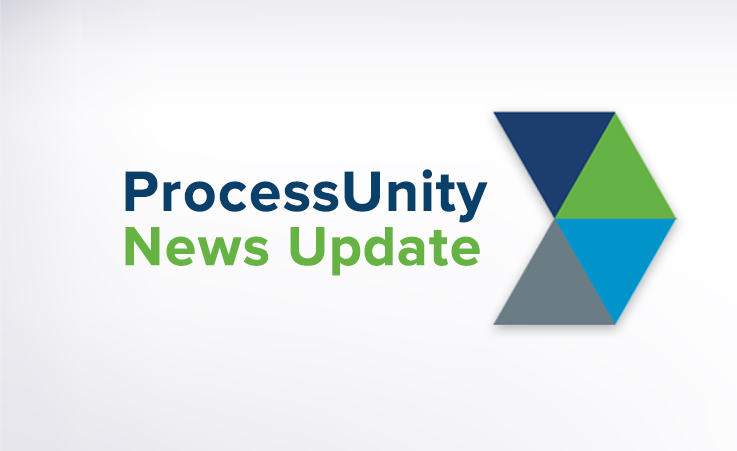
ProcessUnity Introduces Industry’s All-In-One Third-Party Risk...
Completes Integration with Global Risk Exchange; Augments Resources to Extend Coverage to More Outsourced Service..
Learn More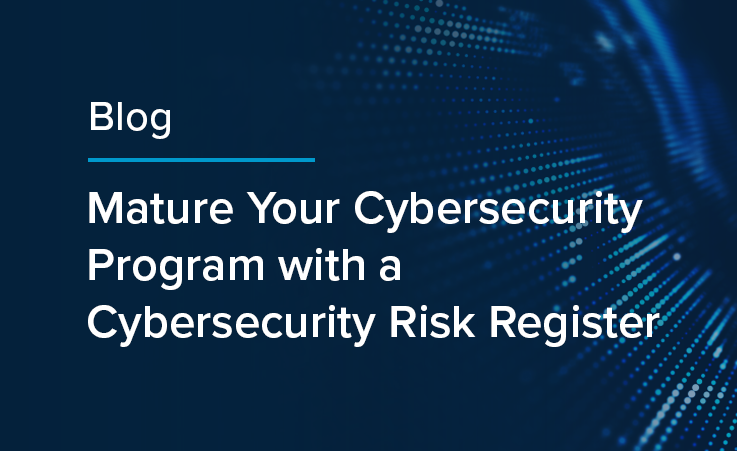
Mature Your Cyber Program with a...
Risk-based cybersecurity risk management is the process of identifying, tracking and mitigating the risks to..
Learn More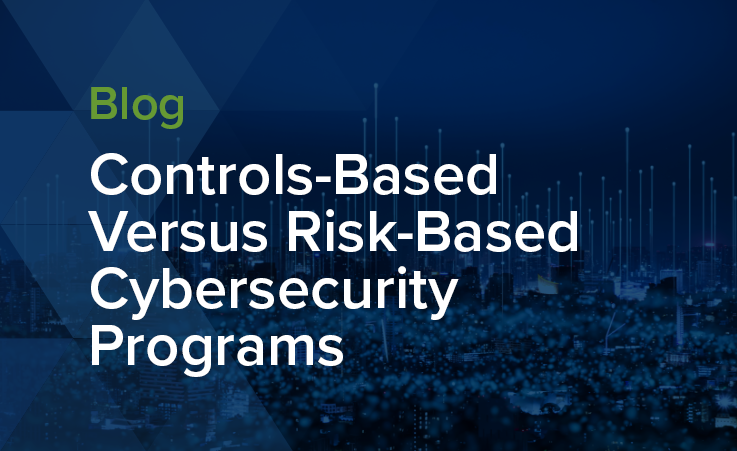
Controls-Based Versus Risk-Based Cybersecurity Programs
In the face of an escalating regulatory burden and increasingly common data breaches, many teams..
Learn More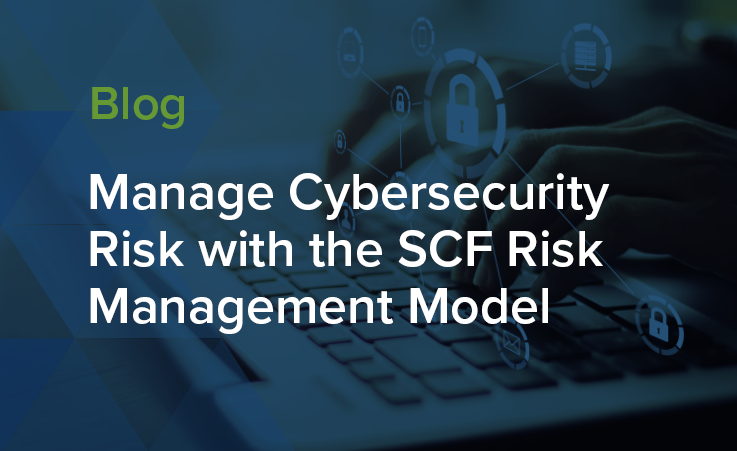
Manage Cybersecurity Risk with the SCF...
The Secure Controls Framework (SCF) Risk Management Model can be a powerful tool for teams..
Learn More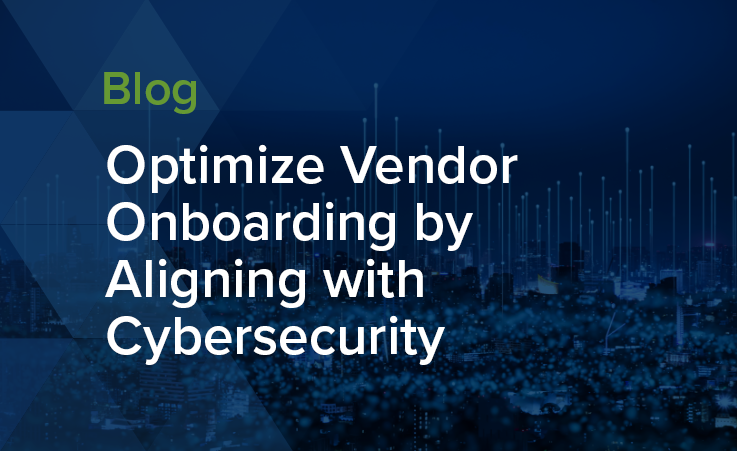
Optimize Vendor Onboarding by Aligning with...
During the vendor onboarding process, both cybersecurity and procurement manage the amount of risk brought..
Learn More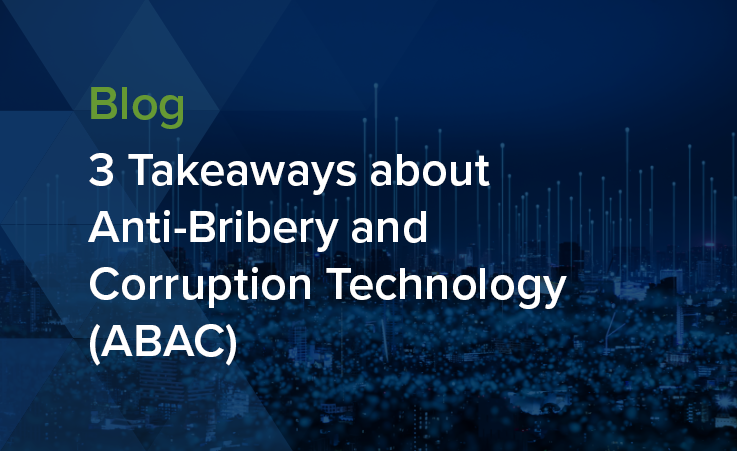
3 Takeaways about Anti-Bribery and Corruption...
Anti-bribery and corruption programs grant businesses visibility into their internal practices and third-party networks to..
Learn More
Properly Scoping Vendor Due Diligence Drives...
Properly Scoping Vendor Due Diligence Saves Both Time and Money One of the costliest mistakes..
Learn More
Security Assessments 2.0: The Next Generation...
The more things change, the more they stay the same. It's a well-worn adage that..
Learn More
How to Conduct Third-Party Due Diligence
Identifying and engaging with the right partners is essential to the success of most businesses...
Learn More
Evaluating Security Risk When Onboarding New...
In today’s tightly interwoven supply chains and highly competitive markets, organizations must continuously evaluate and..
Learn More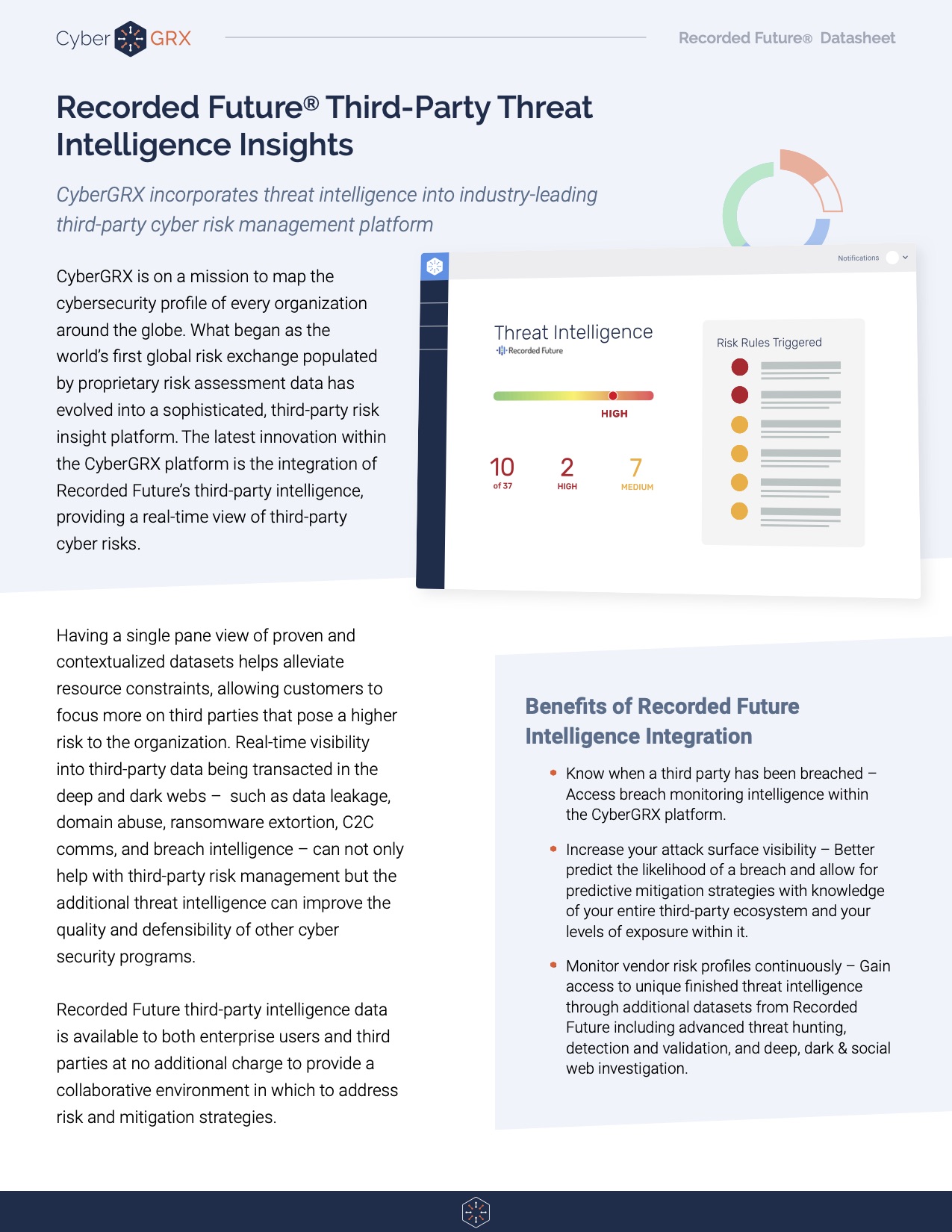
Recorded Future Third-Party Threat Intelligence Insights
Having a single pane view of proven and contextualized datasets helps alleviate resource constraints, allowing..
Learn More
5 Areas to Mitigate Risk in...
If you work within a Vendor Risk Management (VRM) team, you know that third-party risk..
Learn More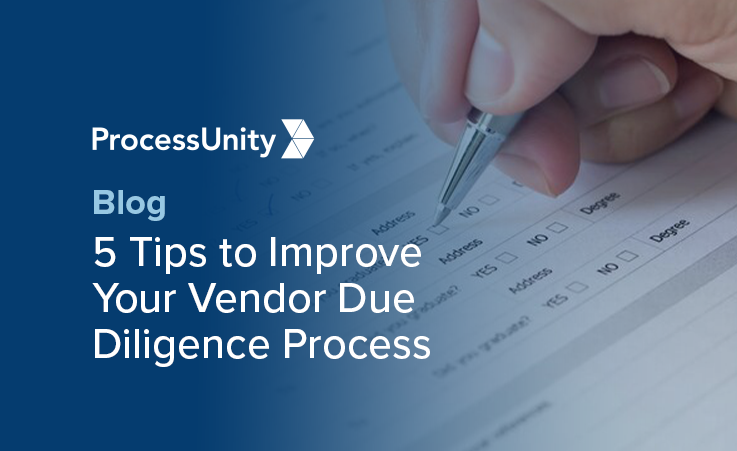
5 Tips to Improve Your Vendor...
Vendor due diligence is essential to any third-party risk management program. However, no two due diligence processes are..
Learn More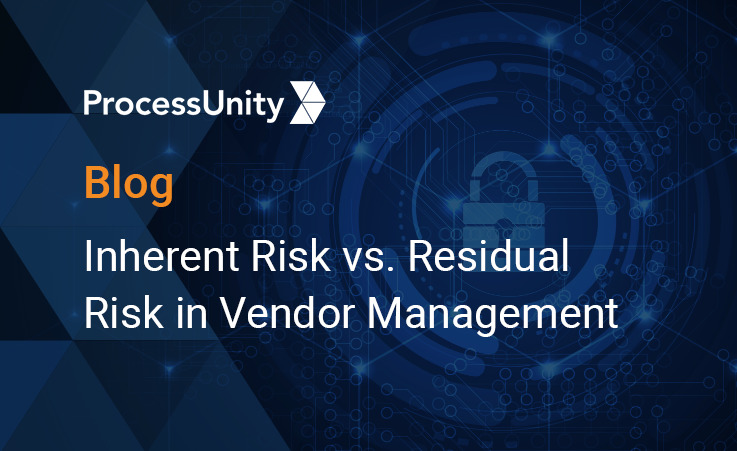
Inherent Risk vs. Residual Risk in...
Conducting a thorough vendor risk analysis is an integral step in Vendor Risk Management. However,..
Learn More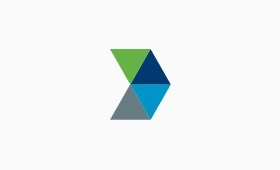
What is Third-Party Risk Management?
Third-Party Risk Management is the process of identifying, managing and mitigating risks present in a vendor relationship. This..
Learn More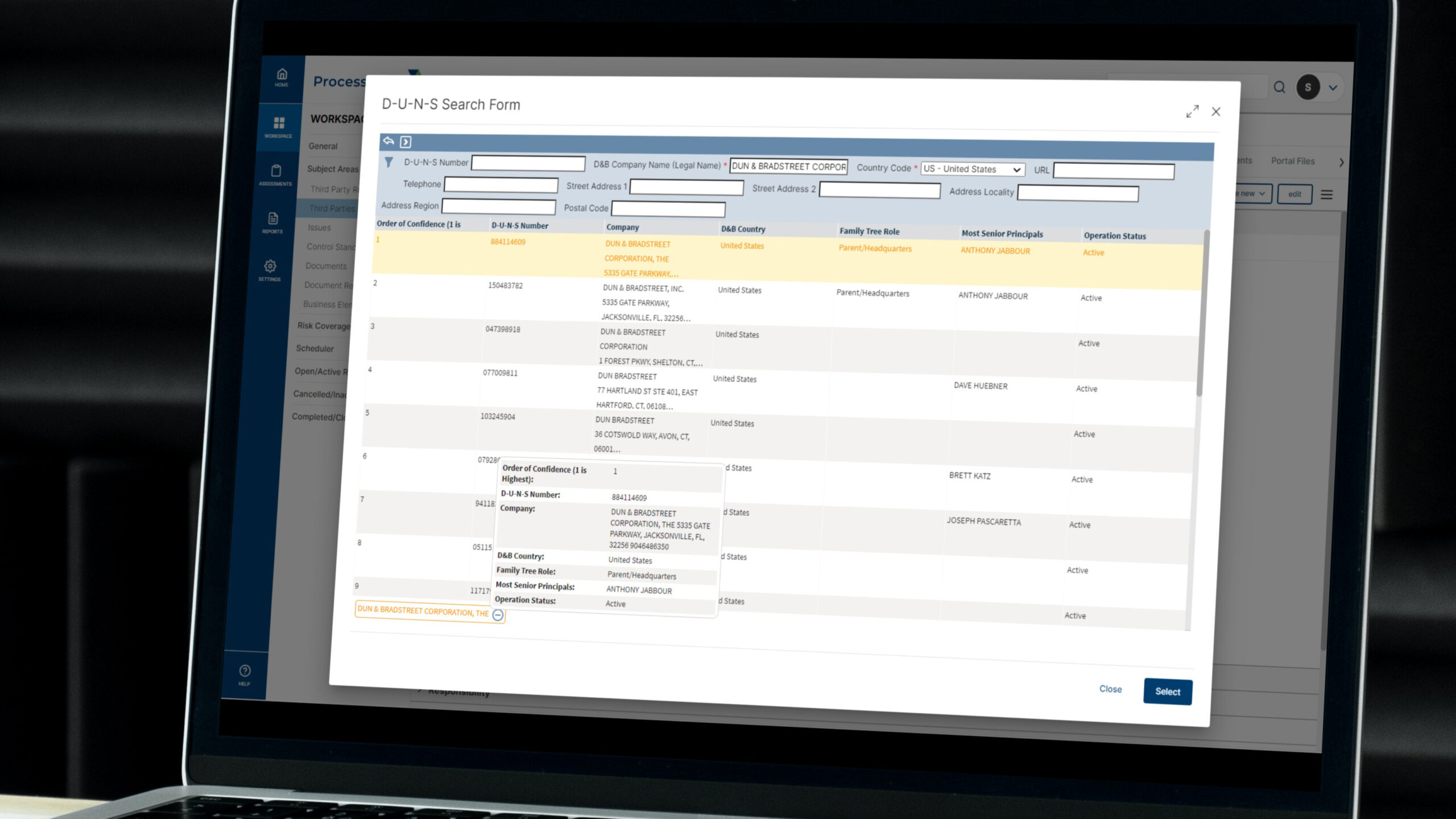
ProcessUnity Vendor Identity Intelligence with Dun...
ProcessUnity Vendor Identity Intelligence seamlessly and automatically incorporates D&B’s D-U-N-S Search and Beneficial Owner Search..
Learn More
Anti-Bribery & Corruption (ABAC) in Business...
The impacts of corruption can be very severe and have been historically well documented. On a political level, corruption – however and wherever..
Learn More
What Is Third-Party Risk Management: The...
The recent SolarWinds breach has reminded news organizations, businesses, and leadership teams around the world..
Learn More
8 Benefits of Completing a CyberGRX...
CyberGRX modernizes and streamlines redundant and inefficient processes that come with shared and static..
Learn More
Third-Party Risk Management Best Practices
New Guide Offers Expert Advice for Effective and Efficient Vendor-Risk Processes A robust, effective, and..
Learn More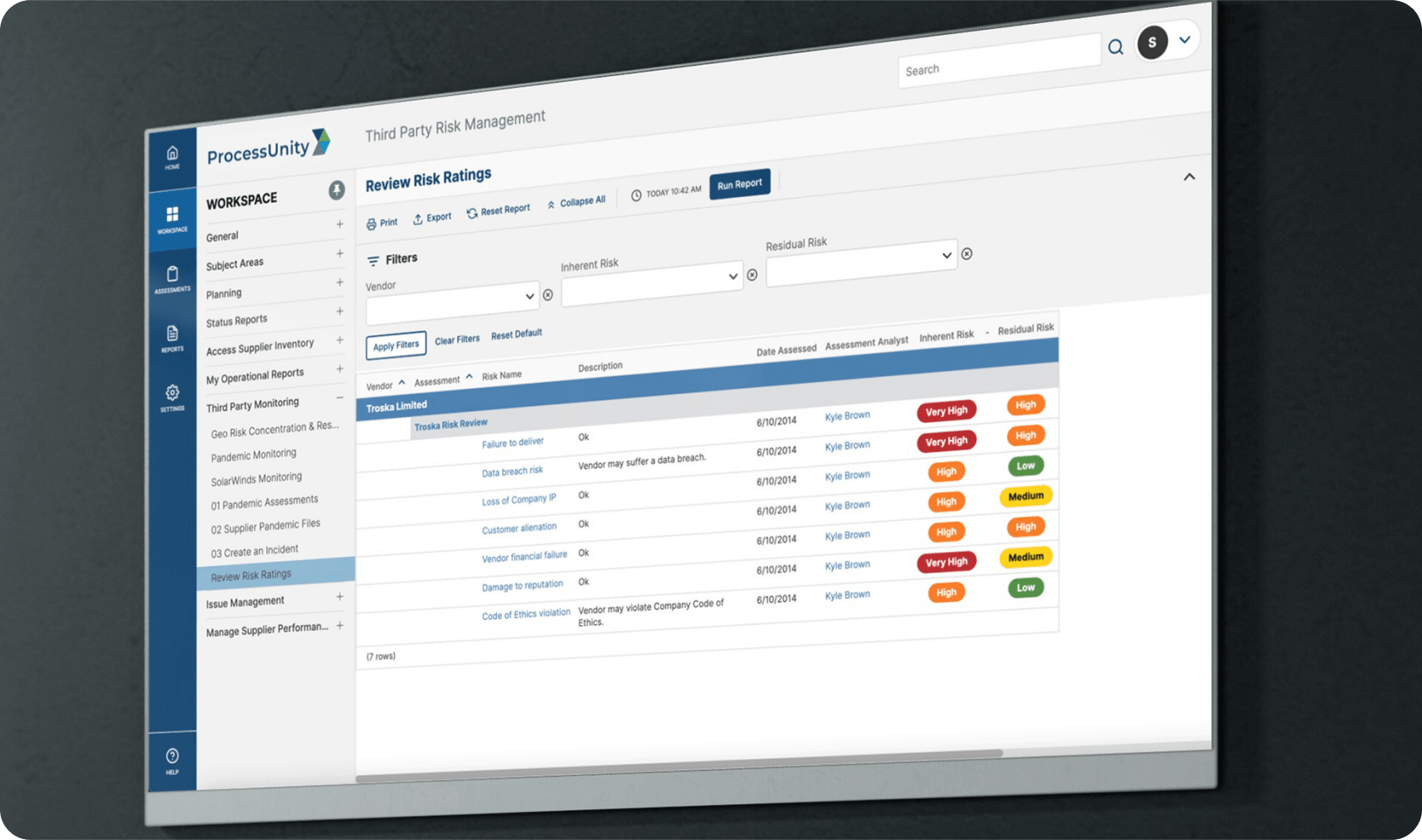
Best Practice Program for ProcessUnity Vendor...
ProcessUnity Vendor Risk Management (VRM) protects companies and their brands by reducing risks from third-party vendors and..
Learn More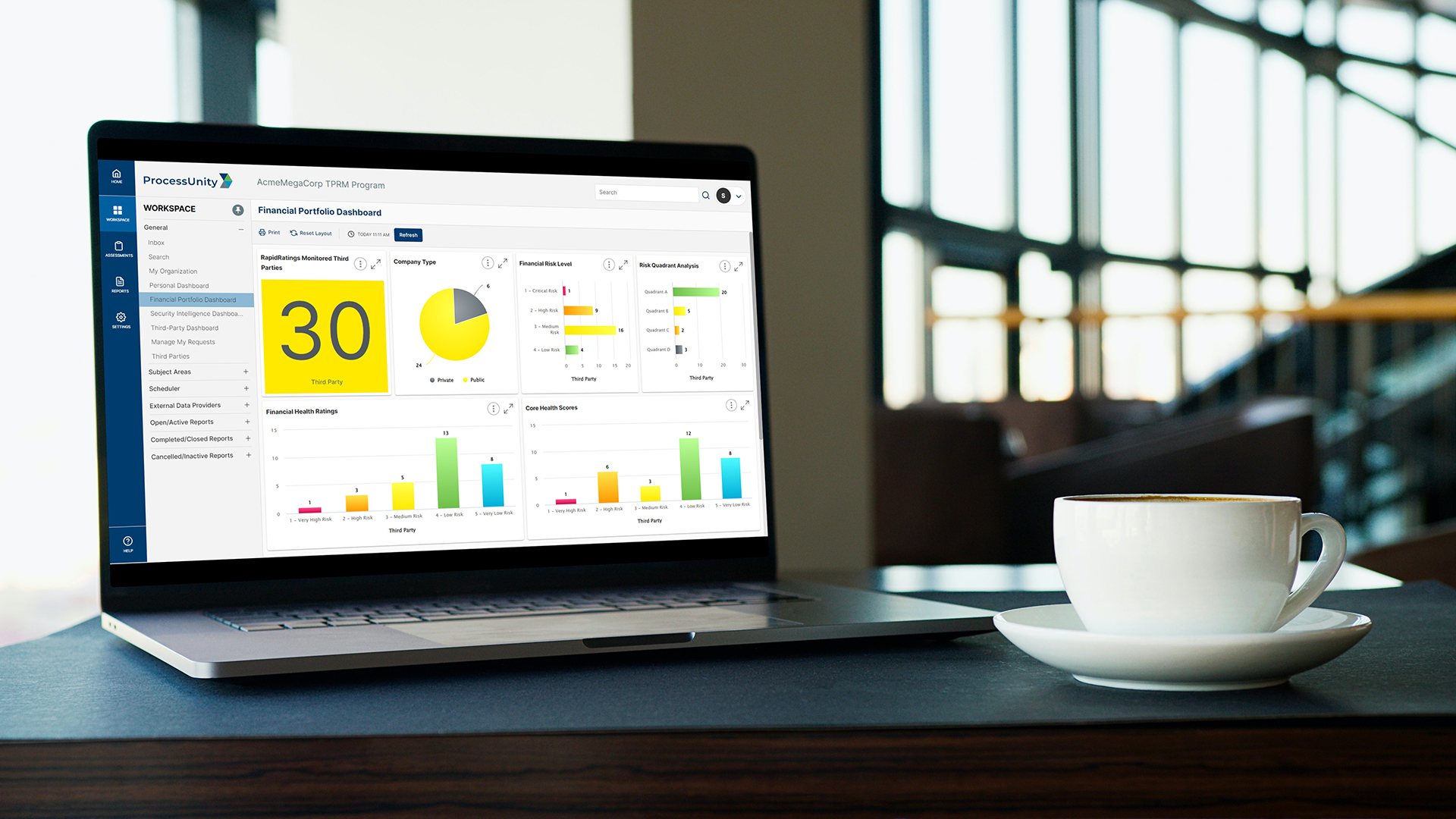
ProcessUnity Vendor Financial Intelligence Powered By...
ProcessUnity Vendor Financial Intelligence (VFI) with RapidRatings seamlessly incorporates RapidRatings’ financial health ratings into ProcessUnity’s Third-Party..
Learn More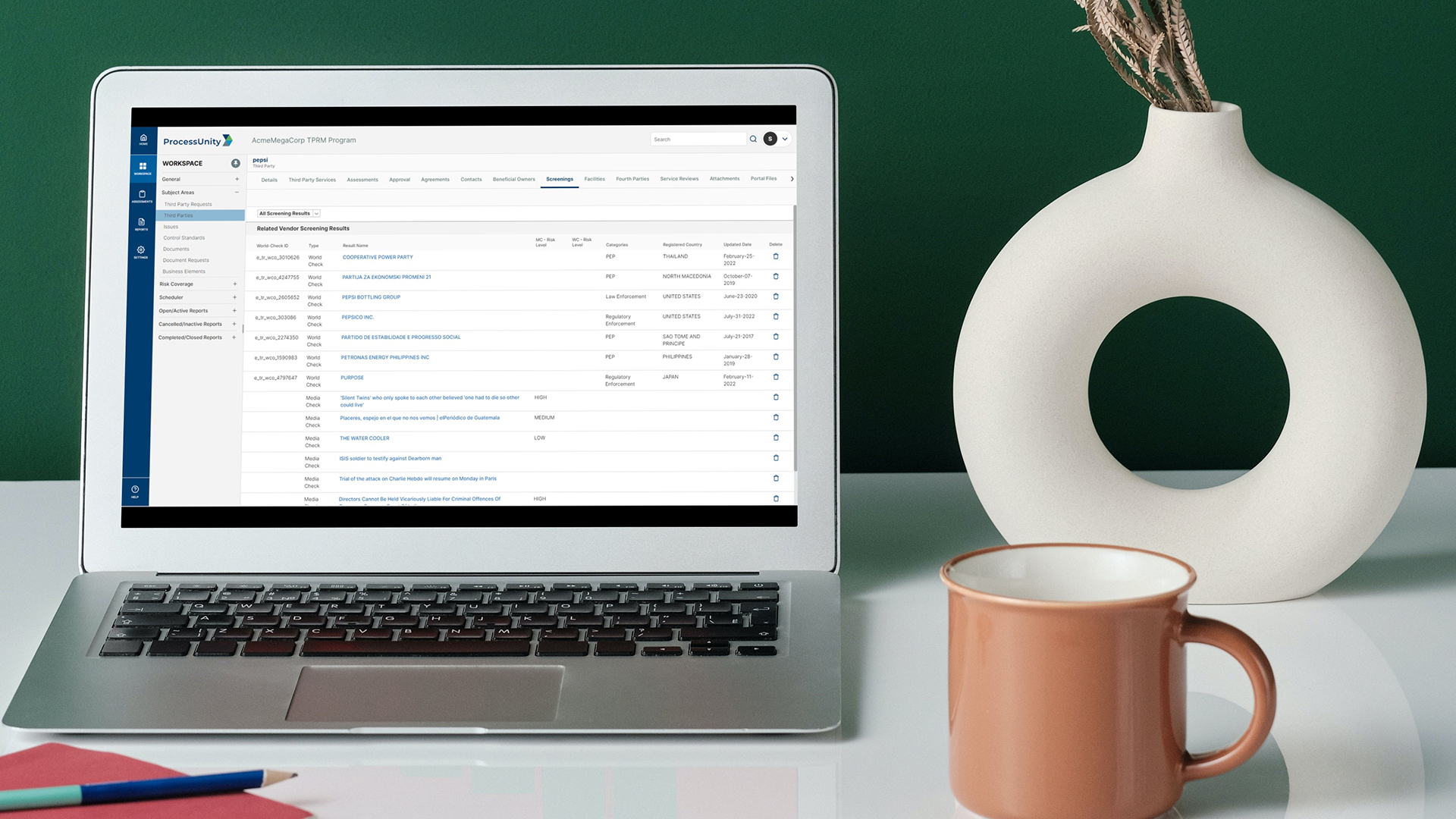
Vendor Screening Intelligence with Refinitiv
ProcessUnity Vendor Screening Intelligence (VSI) embeds LSEG World-Check One’s third-party screening capabilities into ProcessUnity’s Third-Party Risk..
Learn More
How to Stay Ahead of Risk...
Managing risk through pre-contract vendor due diligence in a digitally connected world Thanks to increasing..
Learn MoreAbout Us
ProcessUnity is a leading provider of cloud-based applications for risk and compliance management. The company’s software as a service (SaaS) platform gives organizations the control to assess, measure, and mitigate risk and to ensure the optimal performance of key business processes. ProcessUnity’s flagship solution, ProcessUnity Vendor Risk Management, protects companies and their brands by reducing risks from third-party vendors and suppliers. ProcessUnity helps customers effectively and efficiently assess and monitor both new and existing vendors – from initial due diligence and onboarding through termination. Headquartered outside of Boston, Massachusetts, ProcessUnity is used by the world’s leading financial service firms and commercial enterprises. For more information, visit www.processunity.com.